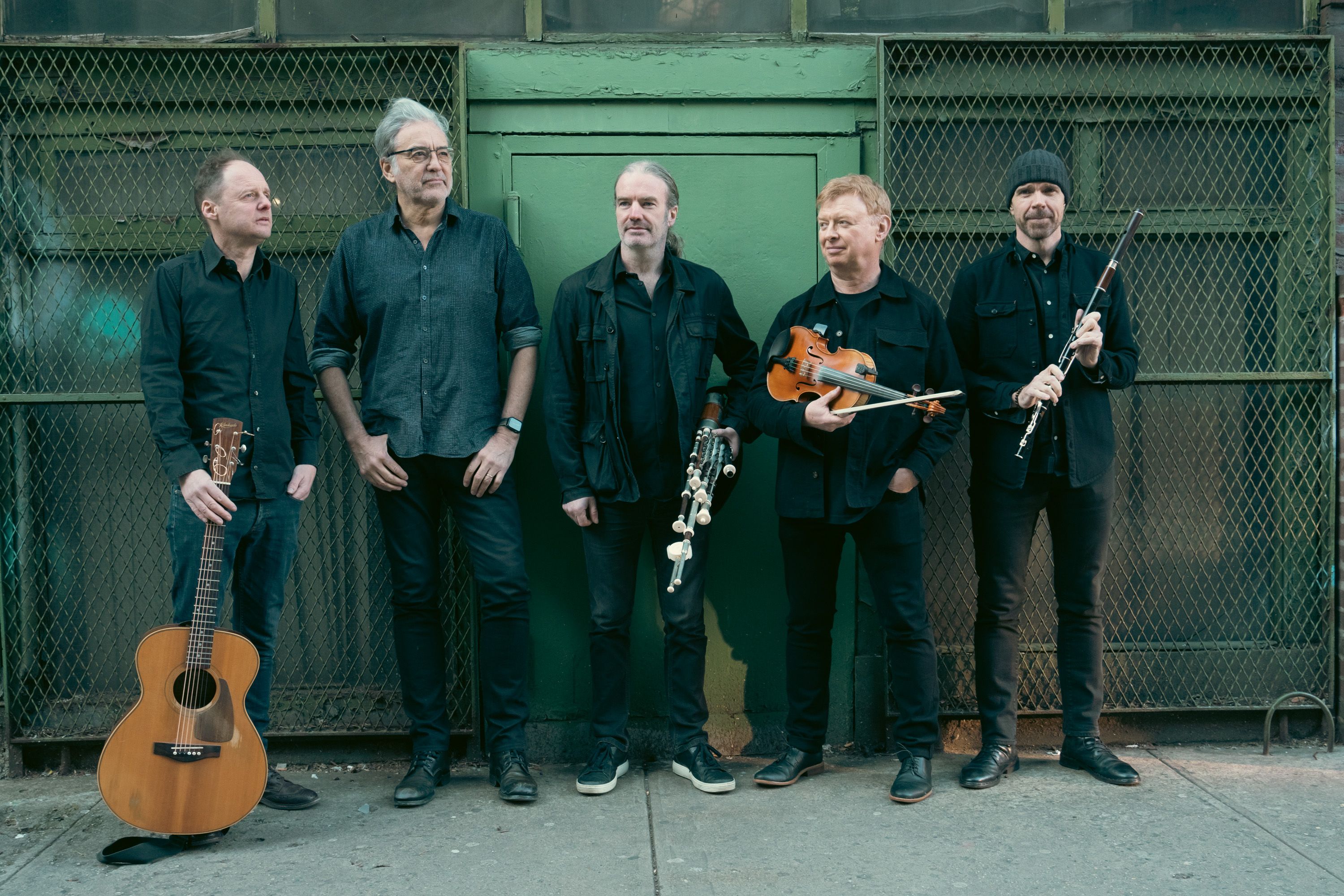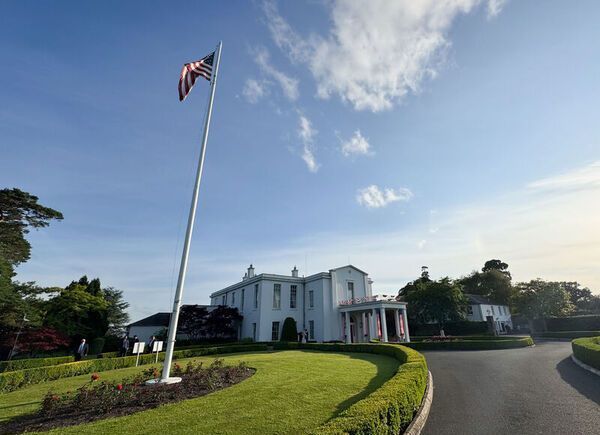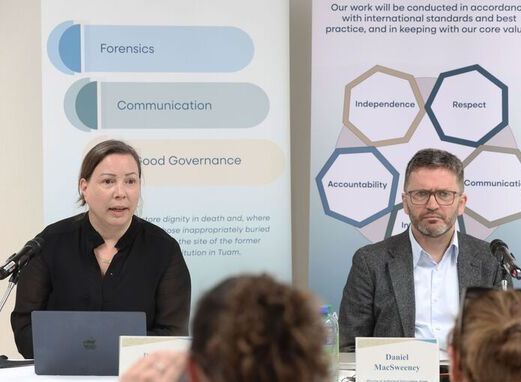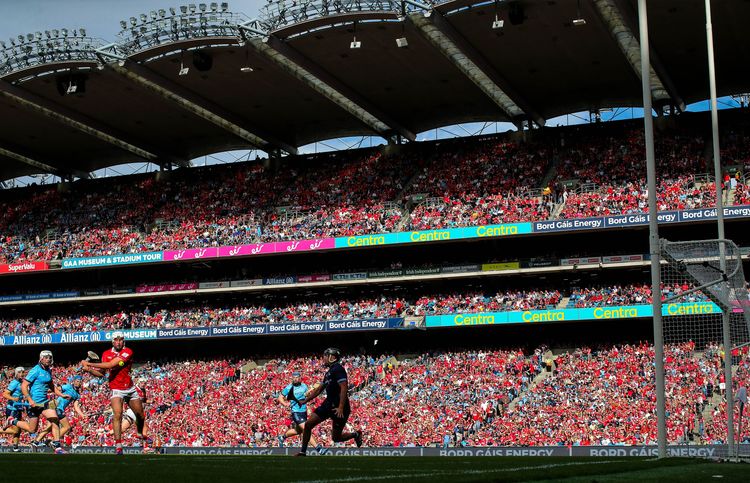It’s great to report that the inaugural “Archiving Irish America: Music, Dance, and Culture” conference, which took place last week at the Ward Irish Music Archives in Milwaukee, Wis., concluded in grand style. Lots of fabulous and thought-provoking presentations from professional academics and top practitioners alike, with the highlights being the three keynote talks from legendary radio producer and sound engineer Harry Bradshaw, acclaimed dancer Jean Butler, and celebrated musician Liz Carroll, all of which were superb.
Lots of tunes were had in the down times, which made it feel less like a conference and more like a fleadh or a festival. A great success all around and one we can look forward to repeating at some point down the road. To learn more, both about the conference and all the interesting things WIMA does, visit their website, https://wardirishmusicarchives.com.
In other news, “the hottest Irish acoustic band on the planet” is at it again. In the media player this week is “Live in Kyoto,” the brand-new album from trad supergroup Lúnasa. Recorded at Taku Taku, a famous Japanese “live house,” it is a fabulous album that does a brilliant job of capturing Lúnasa’s live energy. Fans of the band will certainly find much to love about it, as do I.
This is Lúnasa’s third live album after “The Kinnitty Sessions” (2004) and “…with the RTÉ Concert Orchestra” (2013), and with it they’ve joined a long list of acts, like Deep Purple (“Made in Japan”), Cheap Trick (“At Budokan”), Santana (“Lotus”), Herbie Hancock (“Flood”) and John Coltrane (“Live In Japan”) who have traveled to Japan to record in front of an audience.
Part of what makes this album so interesting and different is the venue in which it was recorded. First opened in 1974 in a space that originally functioned as a sake brewery, Taku Taku started its run as a music café that only sold records. It began presenting live music in 1975 in a “warehouse” sort of environment and quickly became an important part of Japan’s “live house” scene.
Live houses are small, underground music venues (that sometimes double as bars) in which organizers curate the finest music around for the appreciation of its audiences. Taku Taku has mostly played host to local acts over its 50-year existence, but the likes of the B-52s, John Zorn, Clarence Carter, Neville Brothers, Sugar Minott, Albert King, Staple Singers and Bo Diddley (and many other cool foreign acts) have played there over the years to the venue’s intensely interested and engaged clientele. In a country full of cool music spots, Taku Taku is without doubt one of the coolest
The iteration of Lúnasa at work here includes Ed Boyd (guitar), Kevin Crawford (flute, whistles), Trevor Hutchinson (bass), Seán Smith (fiddle, low whistle) and Cillian Vallely (uilleann pipes, low whistle), and if the liner notes are any indication, the content of this new album caught a fair few folks off guard. “In November 2023,” they read, “Lúnasa recorded three gigs at Takutaku club in Kyoto for this live album. They surprised us with a totally unexpected move - 10 sets of new tunes, mostly never played before.”

Lúnasa. [Photo by Anthony Mulcahy]
There is a lot for fans to enjoy. “The Rock Road” is a track that stands out to me in particular. The tunes are lovely (each composed by Vallely, who is on the road right now with David Doocey in support of their album “The Yew & The Orchard”), but it’s the arranging and creativity in the execution that makes this track pop as hard as it does. (Boyd’s playing is great at the beginning here; it complements Smith and Crawford’s playing here beautifully.) “Bal Loudieg,” a trio of Breton tunes, is a lovely track that while very much possess the “Lúnasa sound” has a different rhythmic appeal and showcases, as the band very often does in their music, their affinity for music around the Celtic world. I also enjoy “Red Ned’s.” Taking its name from a pub in Armagh City, the track unfolds in an attractive way that builds the musical excitement.
Two of my favorite tracks here, “The Bull’s March” and “Man from Moyasta,” have in fact appeared elsewhere, the former on Vallely’s 2016 solo album “Raven’s Rock” and the latter on Vallely and Crawford 2009 album “On Common Ground.” But here, the treatment the band gives them is transformative, enhancing the strong source material, and the in-person quality of the recording giving both a more lively and dynamic feel as compared with the studio originals. Both of these tracks, and particularly “Bull’s March,” with Hutchinson’s basswork and Crawford’s flute playing, stand out among the rest.
“Live in Kyoto” is another superb effort from Lúnasa, and one that I think effectively communicates the spirit of the band’s live show. The playing here is exceptional, even by Lúnasa standards and while the music is very well done, it wouldn’t be as impactful were the recording itself not as good it is. On top of it all, it’s pretty daring to do a live album that is, in essence, all new material and to have done it so well is a fairly astonishing feat. Great stuff, pick this one up for sure. To learn more and purchase, visit http://lunasamusic.com.








